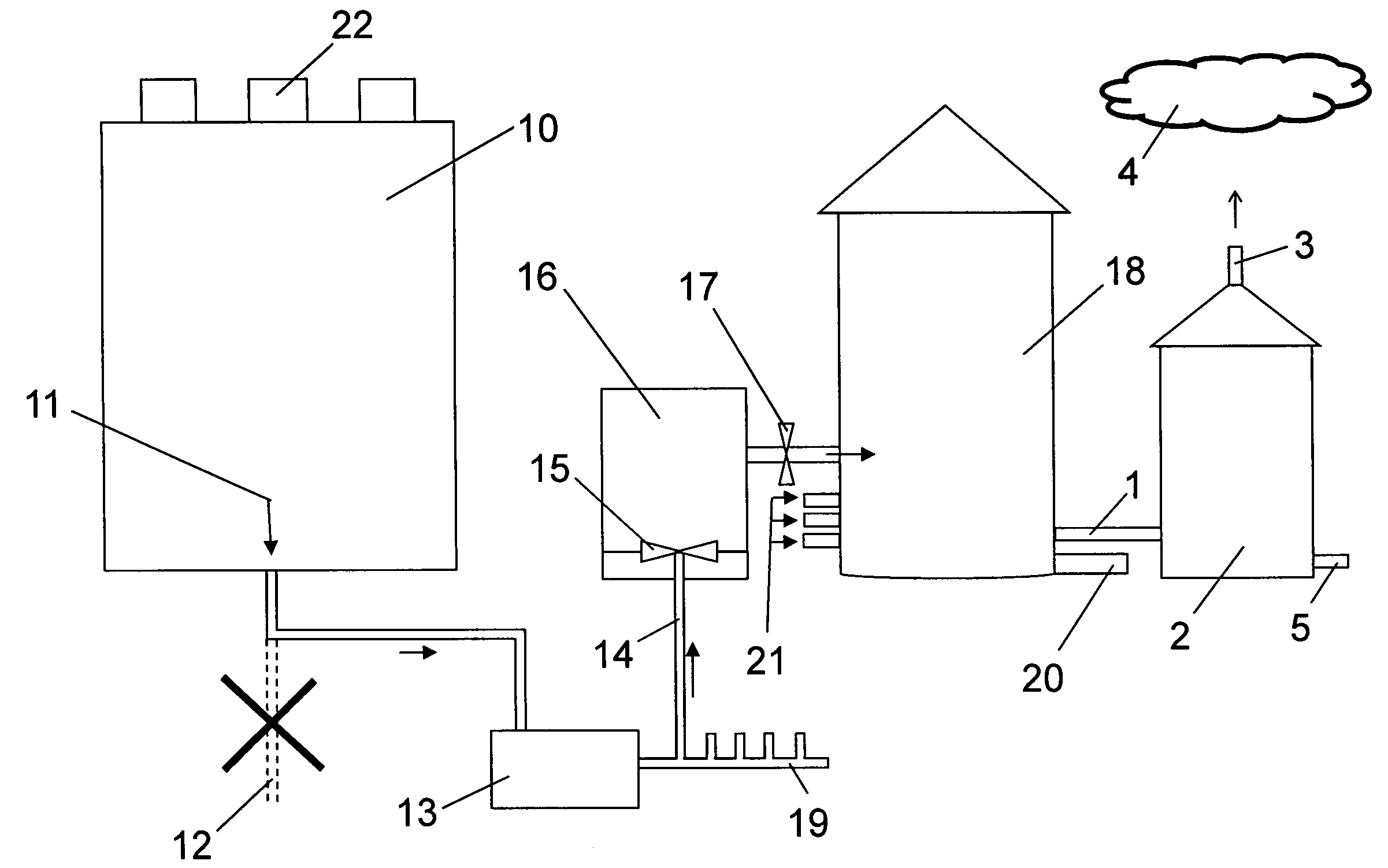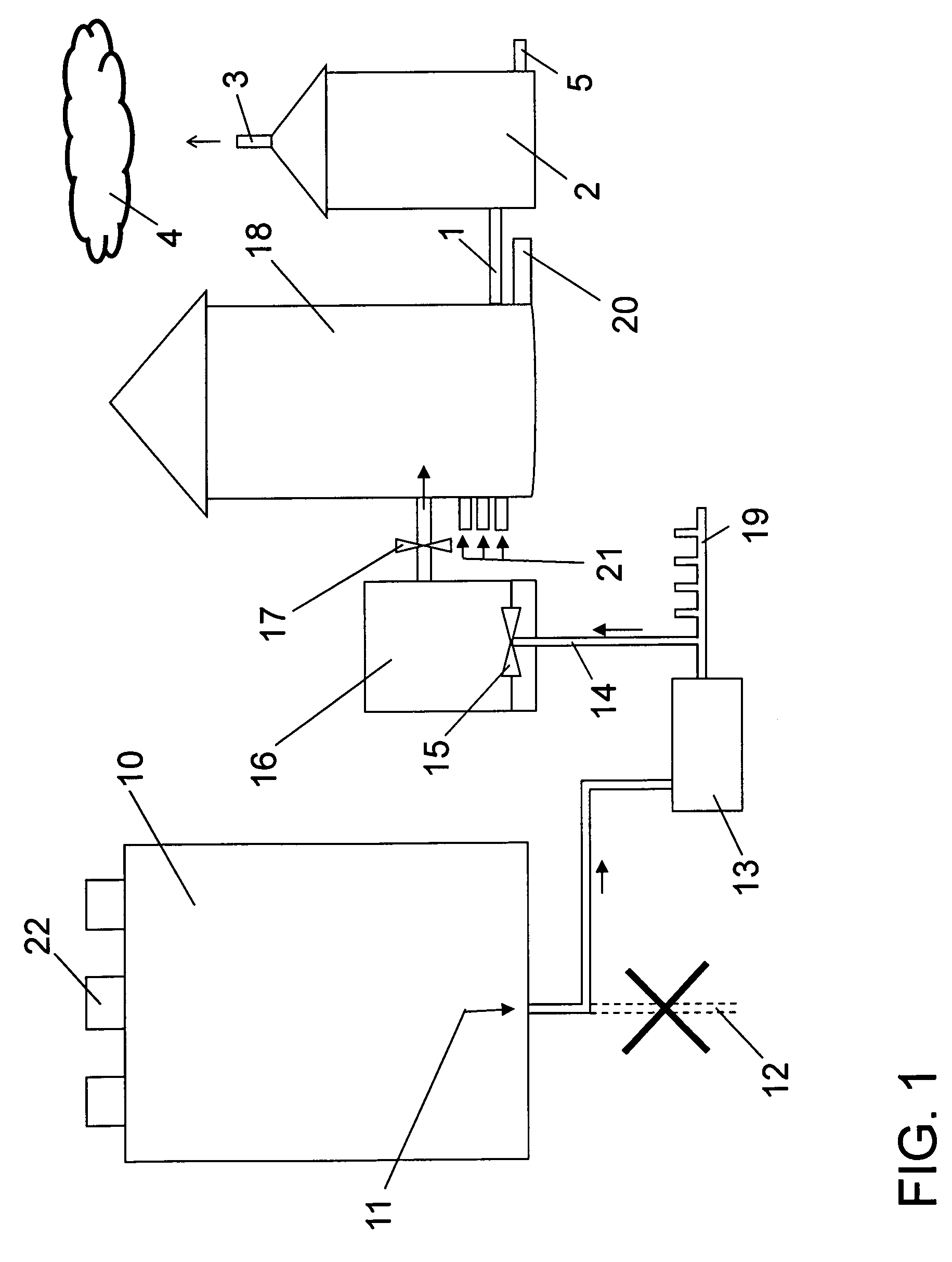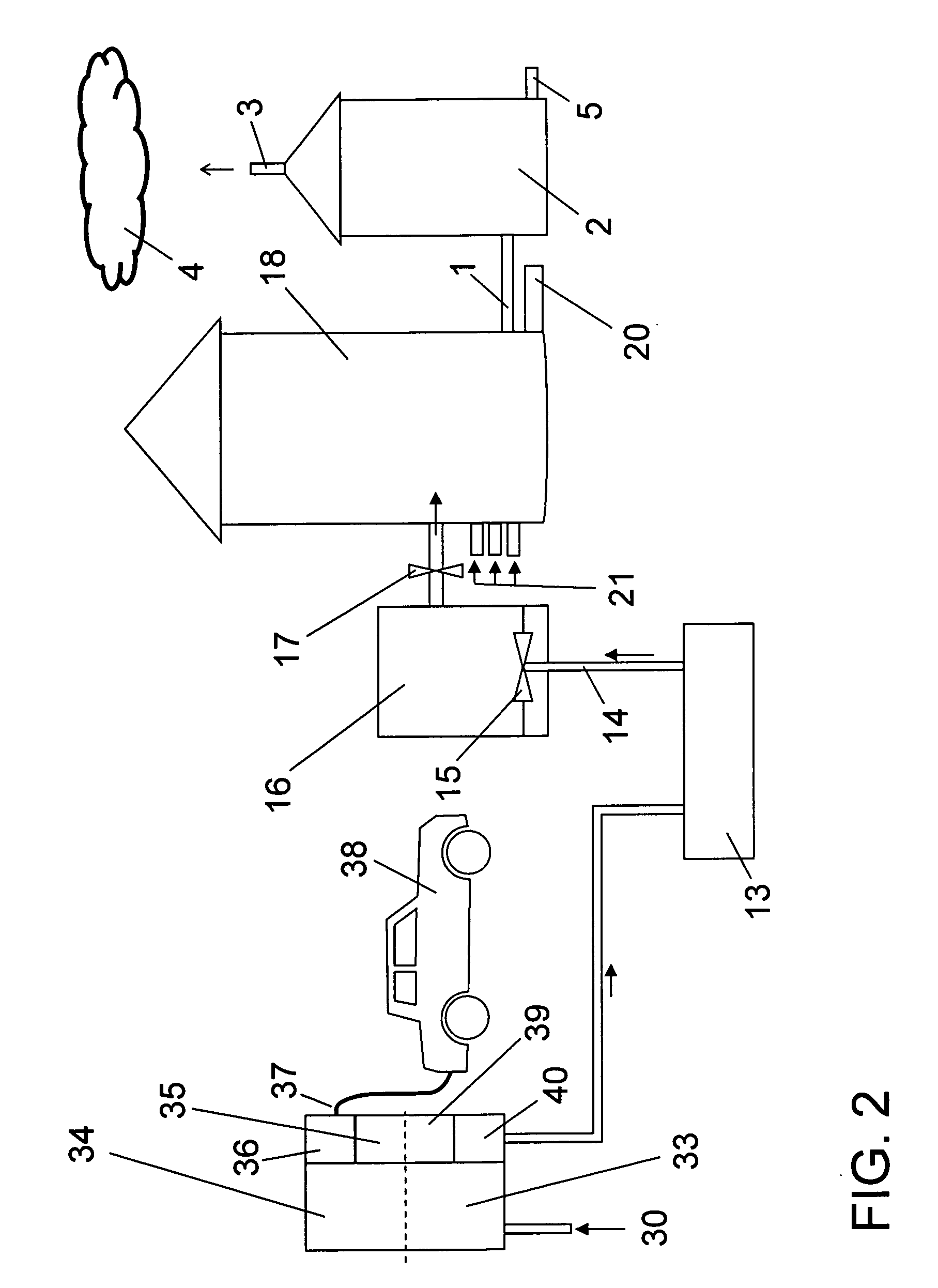Amplified Relief From Drought and Famine- A Spin-Off Technology From Fossil-Fueled Climate Restoration
a technology of amplified relief and drought, which is applied in the field of climate change, weather control, and drought relief, and achieves the effects of stimulating grazer production, promoting dms release, and promoting dms releas
- Summary
- Abstract
- Description
- Claims
- Application Information
AI Technical Summary
Benefits of technology
Problems solved by technology
Method used
Image
Examples
Embodiment Construction
[0038]FIG. 1 is a diagram of a Type #1, supercritical fluid carbon dioxide (SCF-CO2) path, stage-1 invention configuration initially involving a prior-art CCS (carbon capture and sequestration) coal-fired or gas-fired electric power plant (10). FIG. 1 is a diagram of a Type #1 stage-1 invention system used as a prelude to the invention stage-2, 15× amplified ocean capture of FIGS. 4, 5. Using whole-earth carbon accounting, the two stage invention (FIGS. 1, 4) can impart a substantial (700%) negative carbon footprint to coal-fired or gas-fired CCS electric power plants. The figure includes a collection of prior-art, recent invention (U.S. application Ser. No. 13 / 999,195 (hereinafter just: “Ser. No. 13 / 999,195)), and current CIP invention elements. Items 10, 11, 12, and 22 comprise a modern prior-art CCS coal-fired or CCS gas-fired electric power plant which is capable of capturing at least 50% (and as much as 90%) of its carbon dioxide emissions as supercritical fluid carbon dioxide,...
PUM
 Login to View More
Login to View More Abstract
Description
Claims
Application Information
 Login to View More
Login to View More - R&D
- Intellectual Property
- Life Sciences
- Materials
- Tech Scout
- Unparalleled Data Quality
- Higher Quality Content
- 60% Fewer Hallucinations
Browse by: Latest US Patents, China's latest patents, Technical Efficacy Thesaurus, Application Domain, Technology Topic, Popular Technical Reports.
© 2025 PatSnap. All rights reserved.Legal|Privacy policy|Modern Slavery Act Transparency Statement|Sitemap|About US| Contact US: help@patsnap.com



